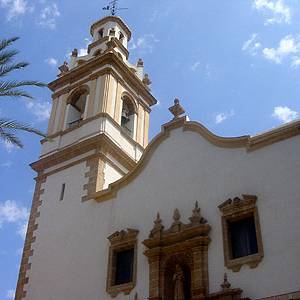Iglesia de San Antonio Church
It corresponds to an architectural complex formed by the Convent of San Antonio de Padua -Franciscan foundation of the 16th century-, the church that was erected years later (first half 17th century) and the square (17th century). This set suffered serious damage in the War of Succession, the French War and the Civil War. The current state of the Church is due to a remodeling that took place in the 18th century.
Portal of doric order, with a venerated niche that contains a modern image of San Antonio de Padua. Inside the church it is a Latin cross plan, inscribed in a rectangle, with a nave and 8 side chapels, and a large enamelled cross with scenes from the Bible that presides over the high altar, sculpted in 1990 by the German goldsmith Egino Weiner, an artist with several works exhibited at the Vatican museum. The bell tower, to the left of the church, is part of the façade and from which the body of the bells stands out, showing masonry pilasters of Doric order with four semicircular arches.
The convent was built on the site occupied by the hermitage of the Mare de Déu dels Desemparats. Today only remains of the convent, after the destruction during the Civil War, a part of the cloister. The remains of it show the fronts of the 2 floors that formed it , calling attention to the floor, at ground level, with 4 elegant semicircular arches framed by pilasters of Tuscan order.


